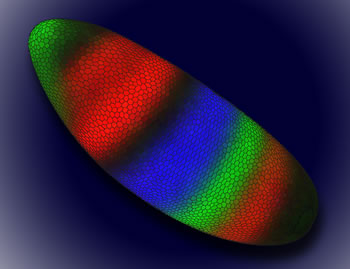When I arrived at MIT in 1976, fresh off the bus from Oklahoma, nuclear fusion looked like an exciting scientific career. The country was still reeling from "the" energy crisis (oil was over $50/barrel in today's prices!), and fusion was the energy source of the future.
It still is.
The promise has always been compelling, and is often described as "unlimited pollution-free energy from seawater." The fusing of two hydrogen nuclei to form a helium nucleus, releasing abundant energy without the radioactive products of nuclear fission, certainly seems cheap and clean. Indeed, this kind of process is the ultimate source of all solar energy as well, and the H-bomb showed that we can create it on earth.
So the challenges for fusion are not fundamental. They're "just engineering."
Foremost among these challenges is keeping the hydrogen nuclei together when they're heated to millions of degrees. This temperature is needed so they can overcome their natural electrical repulsion, but when they have a lot of energy they're just as likely to go in other directions. Sadly, techniques to confine these tiny nuclei seem to require tons and tons of expensive, high-tech equipment. Of course, advocates of cold fusion, now called "Low Energy Nuclear Reactions," think they don't have to solve this problem, but most scientists are unconvinced.
The traditional approach to fusion, then being pursued at MIT, involves confining a donut-shaped plasma of ultra-hot charged particles by using an enormous magnetic field. One problem is that the plasma finds all sorts of ways to wiggle out of the confinement. Over the decades, researchers have made steady progress in controlling these "instabilities." Recent research, still done at MIT and published online in Nature Physics this week, used a surprising technique of levitating a half-ton magnet in mid-air.
The other mainstream approach is to squeeze and heat hydrogen-containing materials by blasting a pellet with powerful lasers from all sides. Research at Lawrence Livermore's National Ignition Facility, published online in Science this week, showed promising results for this approach.
I've always found the idea of milking a steady stream of power out of occasional explosions inside of a horrendously expensive, delicate laser apparatus confusing. In fact, the long-defunct radical magazine Science for the Peoplepublished an article in 1981 claiming that "inertial confinement" fusion was just a plot by the military to test fusion explosions in the lab. That at least made sense.
The new results seem like steps forward for both approaches, but there's a long way to go. For one thing, neither group actually fused anything. They just set up conditions that seemed promising.
The reality is that no researchers want to actually use fusion-capable fuel in their machines, because it would make them radioactive (the machines, not the researchers). This may sound surprising, since fusion is supposed to be so clean. But although fusion doesn't produce radioactive nuclei, it does make a whole lot of high-speed neutrons. To generate power, researchers would need schemes to extract the energy from these neutrons. But the neutrons also irradiate everything in sight, turning much of the apparatus into hazardous waste, which would make experiments much harder.
But if the researchers keep making progress, they're going to have to use the real stuff soon. They'll look for any fusion at all, and eventually for "scientific breakeven," where they get more energy out than they use to power all the equipment. "Commercial breakeven," where the whole endeavor makes money, is much further down the road.
I wish the researchers good luck; they may yet save our planet. But I'm also glad I didn't decide to spend the last third of a century working on fusion.





